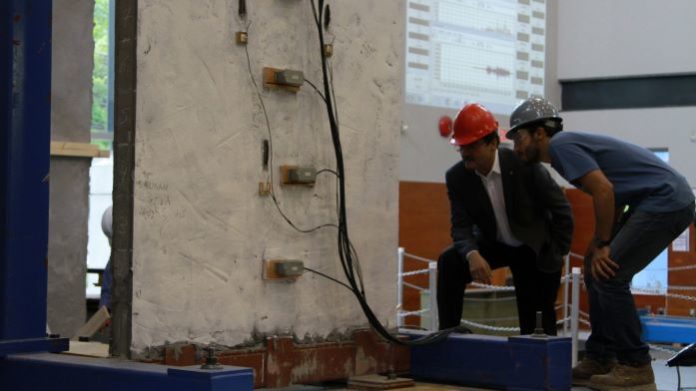Researchers at UBC have developed a new type of concrete – but this one isn’t poured, it’s sprayed.
The new sprayable concrete, officially called eco-friendly ductile cementitious composite (EDCC), can be used to retrofit existing walls, improving their durability in the face of natural disasters like earthquakes.
Concrete is normally made by combining gravel or sand with liquid cement, but in EDCC, 70% of the cement is replaced by flyash and polymer fibres. The polymer fibres are what give the concrete its flexibility and allow it to bend instead of breaking.
When tested in a simulated magnitude 9.0 earthquake, walls reinforced with just a 10 mm-thick layer of EDCC were able to withstand the high-intensity shaking, while those without it toppled over like children’s blocks.
Scientists say there is a one in 10 chance a serious earthquake, nicknamed “the big one”, could strike the west coast of Canada in the next 50 years. To prepare for this eventuality, BC has implemented a seismic mitigation program that includes enhancing or replacing 214 of 342 schools identified as at-risk.
For Dr. Annie B. Jamieson Elementary School in Vancouver, EDCC is being added to the list of upgrades, but it’s possible it could be used for other buildings in the near future.
Using EDCC to earthquake-proof a building also costs half as much as traditional methods, which would be welcome news to a city that is already spending $2 billion on school upgrades.
True to the first part of its name, EDCC is also eco-friendly. Producing one tonne of cement releases almost one tonne of carbon dioxide, and the cement industry is responsible for nearly 7% of worldwide greenhouse gas emissions. Since EDCC contains 70% less cement than traditional concrete, its environmental footprint is much lower.
Overall EDCC provides an easy-to-apply, low-cost, environmentally-friendly alternative to traditional concrete, and will hopefully mitigate some of the destruction caused by future earthquakes.








































